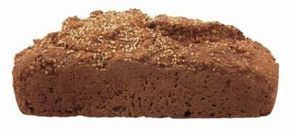Q. I'm just beginning to learn how to bake yeast breads. There are three types of yeast in my supermarket. What are the differences?
A. There are two basic types of yeast for baking: active dry yeast and compressed fresh yeast. Active dry yeast comes in two varieties: regular and quick-rising. Any of the three can be used successfully in bread-baking.
Advertisement
The differences among them are these: Active dry yeast is dehydrated yeast; it is granular and comes in 1/4-ounce packages. Some recipes call for active dry yeast to be "proofed" in warm water and sugar before the flour is added to make the dough.
In other recipes, active dry yeast can be added with the flour to the warm water/sugar mixture. Quick-rising yeast is also active dry yeast, but it has been formulated to raise the dough in one-third to one-half the time.
Compressed fresh yeast is the moist type that is sold in 0.6-ounce and 2-ounce cakes. It is quite perishable, so store it in the fridge and use it within two to four weeks. (Bring it to room temperature before using.)
In general, just use the type of yeast called for in your recipe. However, feel free to use the dry yeasts interchangeably.
Advertisement
